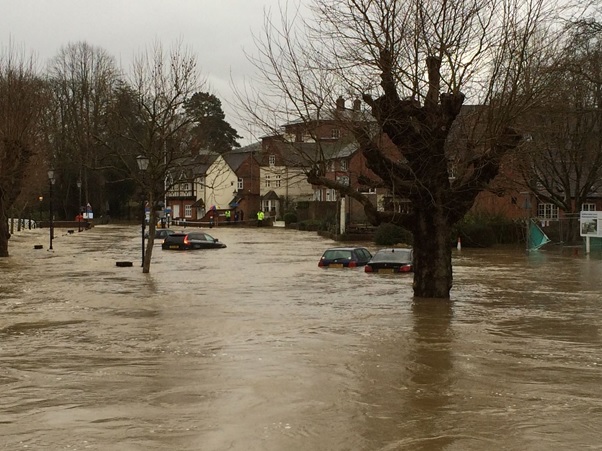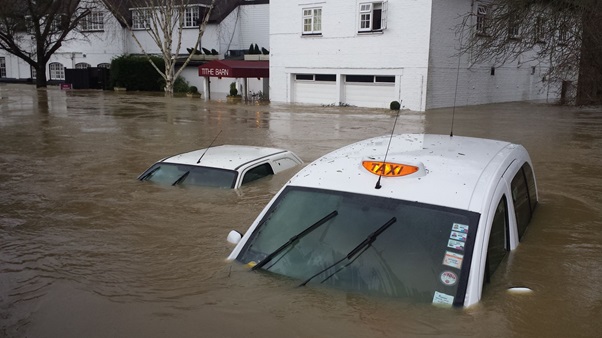How to prepare for a flood – Protect your home and family
Flood is a nightmare that has become a reality in recent years for so many homeowners across Britain. Precious possessions bobbing on filthy water, the very fabric of the house sodden, in need of months of drying and renovation; homelessness, and the potential of thousands of pounds worth expenditure to put right the damage. With some of the wettest weather in record in recent years and serious floods hitting the news, readying your property has never been more important.
But in a few simple steps you can greatly reduce the cost and inconvenience that a flood will cause:

- Find out if you’re at risk
The Environmental Agency’s website has maps showing which areas are most likely to be flooded.
Check whether your home is in an area at high risk of flooding from:
Email the Environment Agency to find out the flood history of your area. As long as the check takes fewer than 18 hours, it’s free!
You can also sign up to receive flood warnings online or by calling Floodline on 0345 988 1188.
If you think you may be at flood risk and want to know more, Unda are able to help. Call one of our expert consultants on 01444 819 200 and they will be able to assist you in further investigate the risk of flooding.
- Get appropriate insurance
Check your current cover – not all insurance policies have extensive flood cover and some offer none at all! Premiums for properties at a high risk of flooding or those that have been flooded before can be unbelievably high. An excess of £40,000 is not uncommon. Shop around for insurance, and do get some quotes from specialist flood insurance companies.
The underlying reason for these high premiums could be due to the Environment Agency flood maps which are utilised by the insurance industry to calculate premiums and have yet to be updated by the Environment Agency to include the recently completed flood protection schemes in many areas.
In 2013, the government and the insurance industry agreed the not-for-profit Flood Re scheme. It is not yet in operation. Run and subsidised by the government, Flood Re will be a pot of money available to insurance companies for pay-outs. As well as the government input, the fund will be garnered partly from customers buying policies incorporating flood risk cover, and also from a levy on other home insurance customers, averaging £10.50 per home. Insurers will pass the flood risk element of a home insurance scheme on to Flood Re, while still covering all other parts of the policy. Due to start in summer 2015, the scheme was delayed until April 2016. Until Flood Re comes into full effect, it is essential that buyers and tenants undertake a flood risk assessment of their next property weather it’s a purchase or a rental property.
- Consider permanent flood protection measures
Don’t think it just won’t happen to you don’t just wait for the flood waters to flow in! There is much you can do in advance to protect your property. You might install non-return valves to prevent drain and sewer outlets spewing back into your property; fill your wall cavities with closed-cell foam; using solid concrete ground floor slabs with a waterproof membrane. Some options are expensive, but such investment could be a life-changer. At very least, get in a supply of sand and sandbags. When flood strikes, both can become scarce!
- Create a flood plan
These are some of the things to think about:
- Prepare a floodkit – food and drink, important documents (a copy of your insurance policy, photos of the house, etc), a torch, blankets and warm clothing, waterproofs, rubber gloves, a first aid kit including all essential medication, copies of important documents, mobile phone with all your important contacts and a charger, a weather-proof radio (battery or wind-up) to keep up with news about the flood.
- Organise a place to stay until it’s safe to go back home (for example with family or friends).
- Consider which items you might move now and which you would need to move to safety during a flood – such as cars, furniture and electrical equipment.
- Be sure you know how to turn off the electricity, water and gas.
- Include pets in your plan. Ensure you have carriers at hand. Add some pet food to your floodkit!
- Make sure everyone in your house knows and understands your flood plan – including children.

Be organised
Having your home flooded is one of life’s most distressing experiences. However, if you follow these steps, you will be better prepared in the time of crisis, subsequent disruption could be greatly reduced, and you will be able to return more quickly to life after flood.
Sadly this type of distressing event is only set to increase according to scientists from the European Commission’s Joint Research Centre with flood damages in Europe to increase 200% by century-end.